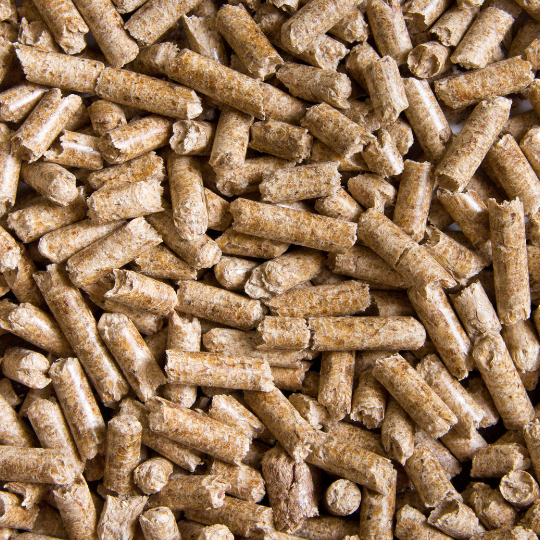Wood pellet fuel prices can be quite a rollercoaster. While some homeowners enjoy the cost savings of using this eco-friendly energy source, others struggle with rising costs. Understanding these price fluctuations is essential for making informed decisions about heating options. This post will dive into the current market trends, factors affecting wood pellet prices, and tips for finding the best deals. Whether you’re a seasoned user or new to wood pellets, staying updated on fuel cost, price, and brand can save you money and improve your heating efficiency.

Market Trends and Influences
Supply and Demand Factors
Supply and demand play a crucial role in determining wood pellet fuel prices. The availability of raw materials, such as wood, directly affects production costs. When forests face restrictions or natural disasters occur, supply decreases. This can lead to higher prices. Moreover, demand has risen due to increased interest in renewable energy. Many households seek eco-friendly heating solutions. As more consumers turn to wood pellets, the competition for resources intensifies.
Seasonal Price Variations
Prices often fluctuate with the seasons. During colder months, demand spikes as people look for efficient heating options. This seasonal increase can drive up prices significantly. For instance, in winter 2021, prices surged by nearly 20% compared to summer levels. Conversely, during warmer months, demand drops. Prices may stabilise or even decline as suppliers clear out excess stock from the previous winter.
Global Market Dynamics
Global events also influence wood pellet fuel prices. Trade policies can affect import and export rates. For example, tariffs on timber products can raise costs for manufacturers. International demand impacts local markets. Countries like the US and Canada export large quantities of wood pellets to Europe and Asia. Changes in these global markets can ripple through local pricing structures, creating further uncertainty.

Wood Pellet Production Process
Raw Material Sourcing
rcing raw materials is crucial for pellet production. Manufacturers often use compressed sawdust and wood shavings from local timber mills. These materials are typically sourced from sustainably managed forests. This approach ensures a steady supply while supporting the local economy.
The quality of raw materials directly affects wood pellet prices. Higher quality inputs lead to better pellets, which can influence consumer choices. Many users prefer seasoned firewood as it burns cleaner and more efficiently.
Manufacturing Steps
The manufacturing process involves several key steps. First, raw materials are dried to reduce moisture content. Next, they are ground into fine particles. This powder is then fed into pellet mills, where it is compressed under high pressure to form cylindrical pellets.
After pressing, the pellets are cooled and packaged for delivery. Some manufacturers also produce specialised products, such as wood pellet pizza ovens. These ovens use the pellets for cooking, providing a unique flavour to food.
Quality Control Measures
Quality control is essential in ensuring consistent pellet quality. Manufacturers conduct regular tests on moisture levels and density. They also check for contaminants that could affect performance.
Certification standards help maintain quality across the industry. Consumers can look for brands that adhere to these standards for assurance. A reliable pellet stove installer can also provide guidance on selecting the best products based on local pellet fuel market trends.

Factors Affecting Pricing
Cost of Production
Production costs play a significant role in determining wood pellet fuel prices. These costs include raw materials, labour, and energy required for processing. The price of timber fluctuates based on market demand and availability. For instance, if there is a higher demand for lumber, the cost of wood chips may rise, impacting pellet prices. Production efficiency can affect overall costs. More efficient machinery reduces energy use and time, leading to lower prices for consumers.
Transportation and Logistics
Transportation also significantly influences pricing. Wood pellets are often produced far from their end-users. This distance adds transportation costs to the final price. Fuel prices directly affect shipping expenses. For example, rising diesel prices will increase the cost of transporting pellets to retailers or consumers. Furthermore, logistics challenges, such as road conditions or seasonal weather disruptions, can delay deliveries and raise costs.
Economic and Policy Impacts
Economic factors and government policies impact wood pellet fuel prices as well. Changes in regulations regarding renewable energy can create fluctuations in demand. For instance, incentives for using biomass can lead to increased consumption of wood pellets. Conversely, if fossil fuel prices drop significantly, demand for alternatives like wood pellets might decrease.
Benefits of Wood Pellets
Cost-Effectiveness Analysis
Wood pellets are often more affordable than traditional fuels. This cost-effectiveness stems from their efficient production process. Many wood pellets come from recycled wood waste, such as wood shavings and sawdust. Using these materials reduces the overall cost. For homeowners with a large house pellet fuel requirement, this can lead to significant savings over time.
Prices for wood pellets can fluctuate. However, they generally remain stable compared to fossil fuels. This stability offers peace of mind during periods of pellet fuel shortages.
Environmental Advantages
Using wood pellets benefits the environment. They produce lower emissions than coal or oil. This is crucial in combating climate change. Furthermore, many wood pellets come from sustainable sources, ensuring minimal impact on forests. Products like Natureheat premium wood pellets exemplify this commitment to sustainability.
Wood pellets also contribute to reducing landfill waste by utilising wood scraps and other recycled materials. Their low ash content means less waste disposal, making them an eco-friendly choice.
Energy Efficiency
Wood pellets are highly efficient as a fuel source. They burn hotter and cleaner than traditional firewood. This efficiency allows for better heating with less fuel required. Systems like hydronic pellet boilers maximise this energy output, providing effective heating solutions.
Pellet heaters also offer convenience and ease of use. Homeowners can store wood pellets easily, ensuring they have a reliable source of heat throughout the winter months.

Closing Thoughts
Understanding wood pellet fuel prices is crucial for making informed decisions. You’ve explored market trends, production processes, and factors affecting pricing. These insights highlight the benefits of using wood pellets as a sustainable energy source.
As you consider your options, remember that investing in wood pellets can lead to long-term savings and environmental benefits. Stay updated on market fluctuations to maximise your investment. Take action now—research local suppliers and compare prices to secure the best deal for your needs. Your choice today can make a difference tomorrow.
Frequently Asked Questions
What are the current wood pellet fuel prices?
Wood pellet fuel prices vary depending on location and supplier. As of October 2023, prices typically range from £200 to £300 per tonne. Always check local suppliers for the most accurate pricing.
How do market trends affect wood pellet prices?
Market trends such as demand for renewable energy, changes in regulations, and seasonal variations significantly influence wood pellet prices. Increased demand generally leads to higher prices.
What factors affect the production of wood pellets?
The production of wood pellets is influenced by raw material availability, manufacturing technology, and operational costs. Efficient production methods can help stabilise prices.
Are there benefits to using wood pellets over other fuels?
Yes, wood pellets are a sustainable energy source. They produce lower emissions compared to fossil fuels and are often more cost-effective, making them an eco-friendly choice.
How can I find reliable wood pellet suppliers?
To find reliable suppliers, research online reviews, check industry certifications, and ask for recommendations from local businesses or community groups familiar with wood pellet usage.
Is there a seasonal variation in wood pellet prices?
Yes, wood pellet prices can fluctuate seasonally. Prices often rise during colder months due to increased demand for heating, so it’s wise to purchase ahead of peak seasons.
Can I use wood pellets in any type of stove?
Most modern biomass stoves and boilers are compatible with wood pellets. However, always check the manufacturer’s specifications to ensure proper functionality and efficiency.
In conclusion, if you are eager to delve deeper into the details of coir products, feel free to explore our website at www.bertwin.com.au. Additionally, for direct and instant connection with our team, you can reach us through the following WhatsApp link here. We look forward to providing you with the information and assistance you need.
